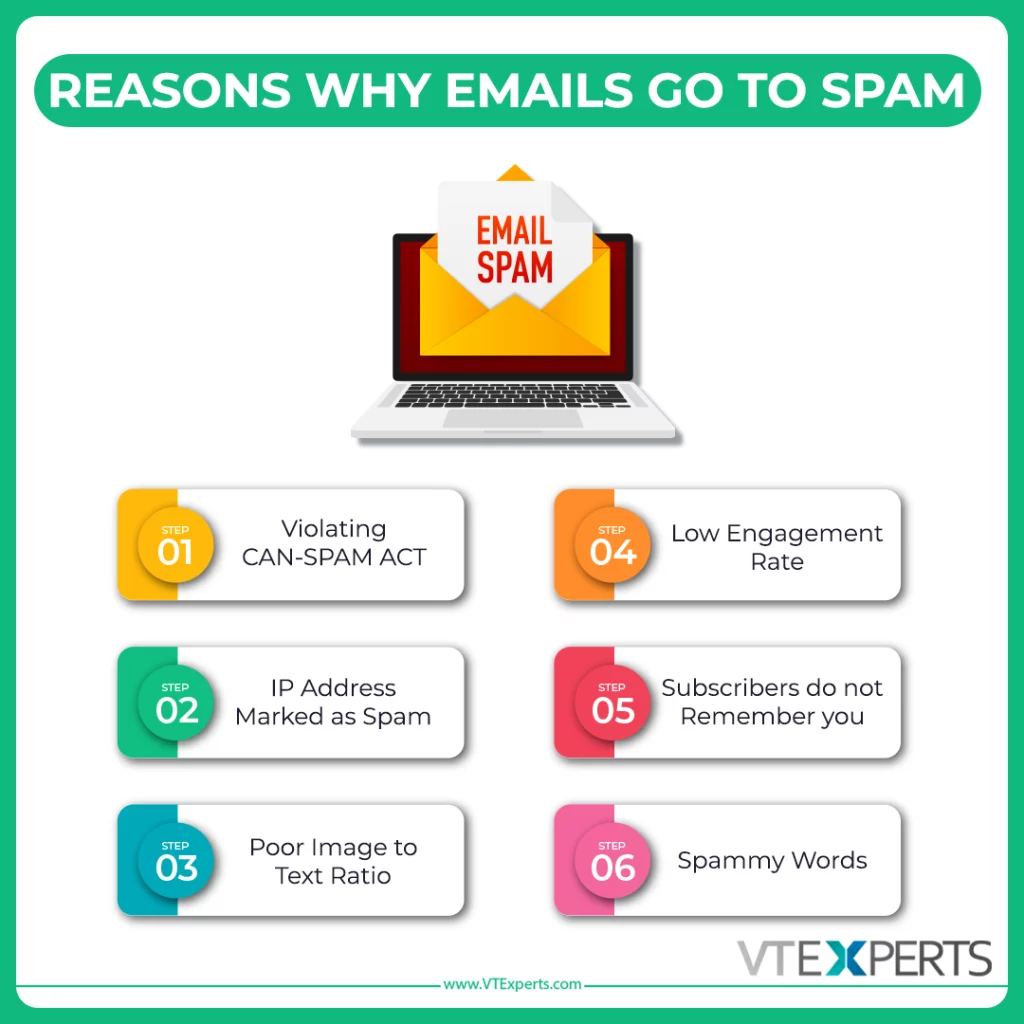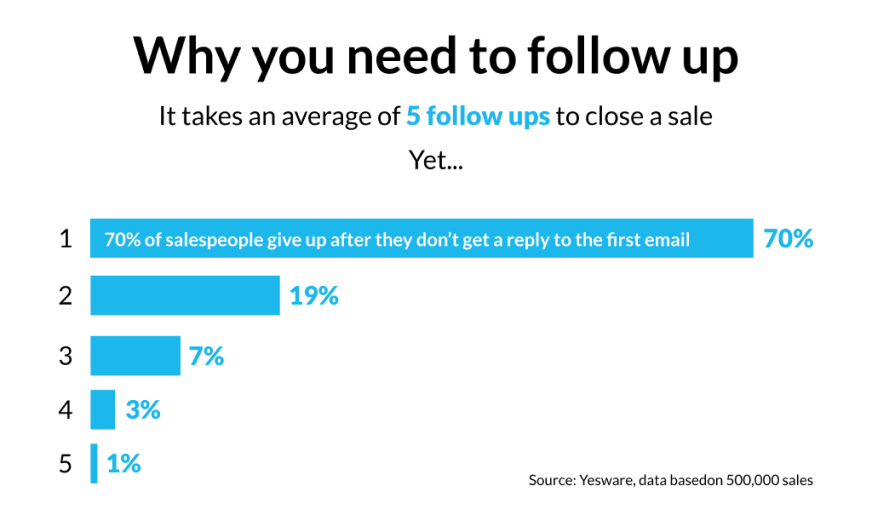Your cold email campaign simply means there is no pre-existing warm lead or connection. So, you’re essentially starting from scratch.
The goal of a cold outreach campaign is to turn these cold leads into warm leads or prospects who’re interested in your offerings.
It’s a head-on proactive way to expand your customer base!
However, it can be an anxious game to play because you’re reaching out to people who most probably have not expressed any prior interest in your business, and they may be wary of unsolicited communication.
So, to be effective, your cold outreach campaigns should be well-targeted, personalized, and provide clear value to the recipient.
Because no one wants to be sold or reply to a spammy person — much like you wouldn’t, right?
How To Improve Response Rate For Your Cold Email Campaign
Technically, cold email response rate means the percentage of emails you send that receive a response.
But, the only metric that actually makes sense to track is if you could achieve the business outcome from that you were hoping to achieve from your cold email campaign platform.
And for that to happen, when you focus on improving your response rate, you need to pay full attention to every stack-point:
Finding The Right Decision-Maker
Your cold outreach campaign’s success is anchored to targeting the right decision-maker. Unless the right person receives your email, your emails will only meet the vacuum.
And not all pitches need to reach the CXO or head of the company. Depending on the nature of your product or service, as well as the size of the company, it needs to reach the head of the team that makes these decisions, especially in leading IT companies.
Size matters — against the conventional advice, period.
Why? Because smaller companies have most of the budgeting still managed by the CEO/founder, but that’d most definitely not be the case when you’re dealing with a well-established corporation.
For example:
If you run a clothing brand and want to pitch merch sales for the holidays, then you’d be reaching out to the CXO in a small company of less than 10 people, or the Head of Human Resources in a company of under 50 people.
For bigger companies, you’d be reaching out to the Head of People or anybody else under them who handles retention.
Similarly, if you run a cybersecurity firm, you’d be reaching out to the CXO or CSO for most organizations. However, for any company with over 100 employees, it is wise to reach out to someone from the CEO’s office rather than the CEO themselves for such outreaches.
You must also note that for many small businesses, team members do not have their own company email addresses.
So, most times, the sales or contact email address is the only way to reach out to the decision maker. In such cases, you can either run a scraping campaign off Google to find the right email addresses to reach out to, or switch to an altogether different platform like LinkedIn.
Choosing The Right Outreach Channel
Different audiences have varying preferences for communication. Some individuals may be more responsive to email, while others prefer the directness of a phone call, and professionals in certain industries might be particularly active on LinkedIn.
Recognizing these preferences is essential for making your outreach more effective.
Industry norms and practices also play a key role in channel selection. In some industries like manufacturing, phone calls are the standard method for initial contact, while in B2B SaaS, email or LinkedIn messages are more common.
Understanding these dynamics helps you make recipients more receptive to your pitch.
Plus, the complexity of your message can also influence channel choice.
If your offering is nuanced and requires detailed explanation, email may be the best choice to provide comprehensive information at first. Conversely, if you offer a standardized product or productized service, a phone call may be more appropriate.
Every cold email campaign is unique, and what works in one case may not work in another.
This is where A/B testing comes into play. By experimenting with different outreach channels, you can gather data on which one yields the best response rate for your specific audience and message.
So, you can allocate different channels to different segments of your audience. Like, Segment A may receive cold emails, while Segment B receives LinkedIn messages. This prevents channel bias from skewing the results.
Reaching Out With The Right Sales Pitch
The next step is working on the right content. Before you do this, segment your outreach based on the decision-maker’s role. For example, put all CXOs in one list, team leaders in another, and so on.
This way, you can work on custom outreach messages for each of these cohorts. Response rates are higher when your message aligns with the decision-maker’s role in the organization.
So, once you’ve pinpointed the right decision-maker, it’s time to craft a compelling sales pitch. This initial outreach message is your foot in the door, so make it count.
Three points to keep in mind when crafting an effective sales pitch:
- Personalization: Tailor your message to the recipient’s needs and pain points. Reference recent news or events related to their company or industry to show that you’ve done your homework.
You need to always remember that outreach is also a numbers game. So, invest in sales automation so that you can personalize and reach a higher volume of people. - Value Proposition: Clearly convey the value your product or service offers and explain how it can solve their specific problems or help them achieve their goals.
- Clarity: Decision-makers are busy, so respect their time by getting straight to the point. A good cold email practice is to keep it between 50-100 words, or think of it like, they shouldn’t be needing to scroll even once — open, read, and take action writing principle.

[Source]
Avoiding The Dreaded Spam
High email deliverability ensures that your messages land in the recipient’s inbox and don’t get flagged as spam.
This matters because the emails that end up in spam folders are unlikely to be seen or opened. Your outreach efforts will go to waste if your emails aren’t reaching the intended recipients’ primary inbox.
And guess what, consistently hitting spam folders can damage your sender reputation. A poor sender reputation can lead to even lower email deliverability rates in the future. Maintaining a good sender reputation is key to high inbox placement.

[Source]
- Implement authentication protocols such as SPF, DKIM, and DMARC to prove the authenticity of your emails. This can prevent your emails from being classified as spam.
- Use clean and well-maintained email lists. Remove invalid addresses and regularly update your contact database. You can easily do this using a bulk email verifier.
- Get recipients’ consent. So, a big no to buying an email list, and a big yes to building one for your company.
- Monitor email engagement metrics like open rates and click-through rates because high engagement reading will help email providers to not flag your emails as spam.
If you intend your cold emails to be more of a nurturing campaigns instead of a straightforward sales pitch, then consider investing in an email marketing tool like Moosend that come integrated with all of the above features.
Following Up Persistently Until You Set Up A Meeting
Persistence is key in cold outreach. It’s common not to receive a response to your initial outreach.
In such cases, don’t be discouraged. Follow up with a polite and concise message (or phone call), reiterating the value you offer and suggesting a meeting or further discussion.

[Source]
But, what do you do when you don’t hear back despite several follow-ups? It could mean the person is either not interested, or is not looking to buy right now.
Either way, it makes sense to leave room for future discussions!
For this, include your tentative pricing range along with a marketing brochure in the last outreach message you send. This way, should they ever be in the market for a product that you offer, they can find all the details they need from your email and can reach out to you, but this time, on their own.
Discussing Pricing For Them
Once you have the prospects’ attention and interest, it’s time to discuss pricing because it’s game time! And here’s the right way to go about it:
- Be transparent about costs, itemized pricing, and avoid hidden fees to build trust.
- Highlight the ROI your product or service offers with case studies, testimonials, and customized ROI calculations.
- Tailor pricing proposals to each prospect’s needs, with tiered options and flexibility for negotiation.
- Address objections by actively listening, providing clear responses, and reinforcing the value of your offering.
- Stay accessible, provide additional information when needed, and demo your will to go to any length(s) to actually help solve their issue(s).
Closing Like A Pro And Doing Post-Sales Engagement
When the prospect is ready to move forward, make the closing process as smooth as possible. Basically, conduct yourself like a pro!
Provide clear contracts, flexible payment options, and ensure legal compliance to streamline the closing process.
You should definitely take it up a notch by offering onboarding assistance, assigning dedicated account managers, and promptly addressing any challenges during the customer’s implementation phase.
And remember, the game doesn’t end here…
Continue to nurture the customer relationship after the sale by delivering excellent customer service, maintaining regular communication, soliciting feedback, exploring upselling opportunities, and more.
Final Words
It doesn’t matter how many cold emails you send, but how you send them is what changes the game completely.
Sending the cold emails is one of the quickest ways to land clients, or win big partnerships. But if done haphazardly, it will most certainly establish your market image as a spammy biz guy.
And you definitely don’t want that as business is built on top of a thick reputation layer.
Follow the above-mentioned steps, and let us know how it helped you to improve the response rate of your cold email campaign(s) which resulted in increased business for you.

